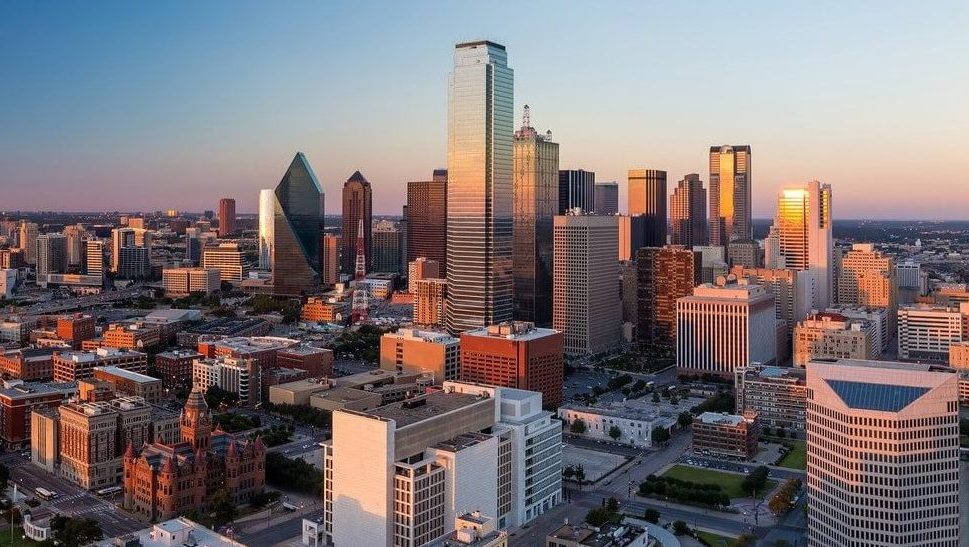Mid-Cities Top D/FW Leaderboard for Cycle Rent Growth

The Dallas/Fort Worth apartment market has recorded solid rent growth during this cycle, with both the Dallas and Fort Worth markets outpacing the national average for total growth. But contrary to what you might expect, the region’s performance over the cycle wasn’t driven by its top-tier areas.
A group submarkets in the region’s so-called Mid-Cities area accounted for the bulk of rent growth in the Dallas/Fort Worth apartment market since early 2010. The Mid-Cities is generally defined as a 30-mile span between Dallas and Fort Worth that roughly stretches from D/FW Airport south to I-20.
Mid-Cities submarkets making the top 10 list of rent growth during this cycle include: North Arlington, North Irving, South Irving, Haltom City/Meacham, Hurst/Euless/Bedford, Central Arlington and Northeast Fort Worth/North Richland Hills.

These areas are traditionally seen as bedroom communities for Dallas and Fort Worth. But over the current cycle, they’ve benefitted from significant capital investment in the broader North Texas region and have developed solid economic bases and employment drivers to complement their already high quality-of-life attributes and relatively affordable housing.
One thing that they have missed out on is the persistent, intense apartment development seen in the downtown areas and affluent northern suburbs of both Dallas and Fort Worth. The Mid-Cities submarkets are dominated by Class B and C apartment product, and most of them have seen nothing more than a handful of new supply.
North Arlington took the top spot on the rent growth leaderboard, with rents climbing 44.9% from 2010 to mid-2018. That compares to rent growth of 35.3% for Dallas/Fort Worth and 31.6% nationally.
East Fort Worth took the #2 spot on this cycle’s rent growth leaderboard, with prices climbing 44.3%. Three other submarkets posted rent growth above 41.0%: Far North Dallas (42.6%), North Irving (41.6%) and South Irving (41.1%).
Even with strong growth in the cycle, the top 10 performing submarkets are still relatively affordable, with average monthly rents of $978 as of 2nd quarter 2018. That compares to average monthly rents of $1,198 for the bottom 10 performers. In addition, occupancy was tighter in the top 10 markets (averaging 95.1%) due to limited new supply and solid demand drivers, while weaker occupancy rates dominate the bottom 10 performers (averaging 94.3%).
D/FW’s underperformers still posted relatively solid results, with rent growth of 22% to 32% just shy of the national average. Many of those underperformers are located in the southern portion of the Dallas apartment market where demand drivers are weaker. The exceptions were Oak Lawn/Park Cities, Intown Dallas, North Oak Cliff/West Dallas, Intown Fort Worth/University and Rockwall/Rowlett/Wylie. Demand drivers are strong in those areas, but apartment development has deterred rent hikes. Those five submarkets recorded inventory growth of 30% to 80% during the cycle.

The urban core submarkets, where construction has been so plentiful, were underperformers for rent growth during the cycle. Intown Dallas, where inventory grew nearly 63% during the cycle, posted rent growth of 27.5%, the third smallest increase. Meanwhile, Oak Lawn/Park Cities, adjacent to Intown Dallas, was the region’s laggard, with rents up 22% during the cycle. Oak Lawn/Park Cities posted inventory growth over 50%.
Fort Worth’s urban core submarket, Intown Fort Worth/University, posted rent growth of 30.7%, despite inventory swelling nearly 45% over the past nine years.
The construction hot spots in the northern suburbs registered rent growth for the cycle that was around the D/FW norm (35.3%). Rents were up 33% to 36% across Richardson (36.3%), Frisco (34.3%), North Fort Worth/Keller (33.8%), Allen/McKinney (33.3%) and Las Colinas/Coppell (32.7%).






